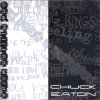| Monday, November 3, 2014 |  |
 |
 |
|
Hear Today's Songs |
 |
 
 
 |
 |


 A New Breed of Indie Artists
A New Breed of Indie Artists Free Music and Programs for Radio and Podasters
Free Music and Programs for Radio and PodastersGeo-Broad, with Focused Content
|
It's difficult to communicate a concept. Spoken words don't always hold the same meaning when heard. An example: I'll bet our definitions of "compelling" are different. Now we have the internet, which offers so much it boggles the mind. |
"Their local, though, is not geographic; it's focused content.(All topics you are passionate about become local.)" |
Let me take a few lines to quote something I wrote in January of 2012:
|
My job is to relay your options... AudioGraphics.com was launched January 15, 1997 (the company, in June 1991). My systematic exposure to concepts that I could never imagine began with the internet. Who knew then that online radio would become as big as it has in only a decade? Truthfully, I did. Which is why I've drawn the ire of many in the radio industry, constantly reminding them that technology was theirs to be had, pounding away with a single message - radio needs to change, to adapt. |
It appears the radio industry is trying to get through this transfer to digital with little change. Its approach is causing its consumers and advertisers audio indigestion.
Trade magazines run articles on the top advertisers, people moves, and quarterly revenue reports. Reading about a new format or improvement in an existing format is rare.
I get a sense that broadcasters feel Pandora is the only real online competition. Few acknowledge broadcast's true peril - increased competition for consumers and advertisers from multiple options.
Two items hurt: 1) Campaign response metrics have become an online advertising currency, except in radio; and 2) Broadcast execs ignore radio stations that don't appear in Triton Digital's Webcast Metrics.
Set aside radio using online data. I'm convinced it won't happen. Despite watching millions of dollars move to digital, selling impressions will remain radio's sales pitch.
Study the growing list of online audio competitors. Many are built on a concept of being "local." Their local, though, is not geographic; it's focused content. (All topics you are passionate about become local.)
One example of this focused content concept is Rock and Recovery radio.
Building RadioRow, I'm aware of many stations catering to groups; Beauty Radio, Gay Internet Radio, A Healthy Life radio, radio for pilots (Flight Time Radio), Biker Radio, etc. Each attaches to a lifestyle interest of the audience. Each goes wide across demos.
This style of programming is focused. Advertising is from companies serving the special needs of each group. It's a deja vu to when stereo and record stores were first to advertise on FM radio stations.
You may argue that broadcasters serve groups who "relate to the content." But, in the majority of cases, all that holds a broadcast audience together is a style of music. Online, lifestyle stations offer multiple touchpoints.
Aimed at addicts, Rock and Recovery radio is based in Akron, OH - the birthplace of Alcoholics Anonymous. Though the station is not related to AA, it states: "Our goal is to empower and entertain those suffering from addiction while enhancing their self-motivation and personal nourishment."
This is smart programming from The Summit group.
"The Summit is listener supported, non-commercial public radio..." says its Mission Statement. These broadcasters understand the power of the internet. They are creating tomorrow's radio.
The Summit group has scored by focusing on an unlimited geographical audience sharing a common interest - staying sober.
Life style radio is a newsworthy item for broadcasters today, far more important than seeing "blasts from the past" photos or being updated on all Christmas stations.
Rock and Recovery radio is one step off the path of radio's past. We need more of these steps to change an industry.
More Articles
Today's indie introduction is to...
| Dance Musc artist, Chuck Eaton |
 Hear Song |
That's All We Need Download Song
|
Give Chuck Eaton's "That's All We Need" a listen.
Add it to your playlist, free!
 |
 |
 |
comments by Disqus |



